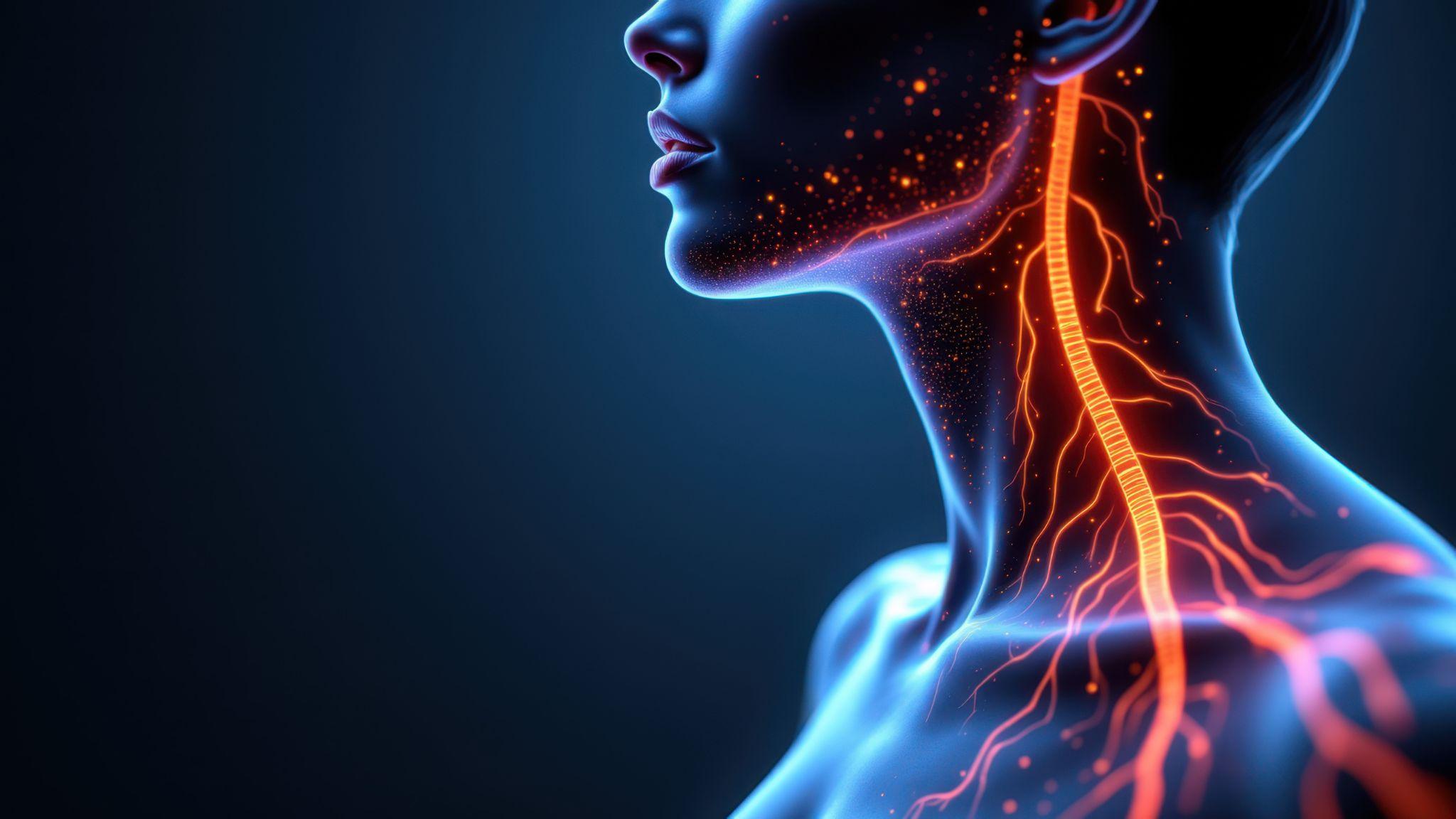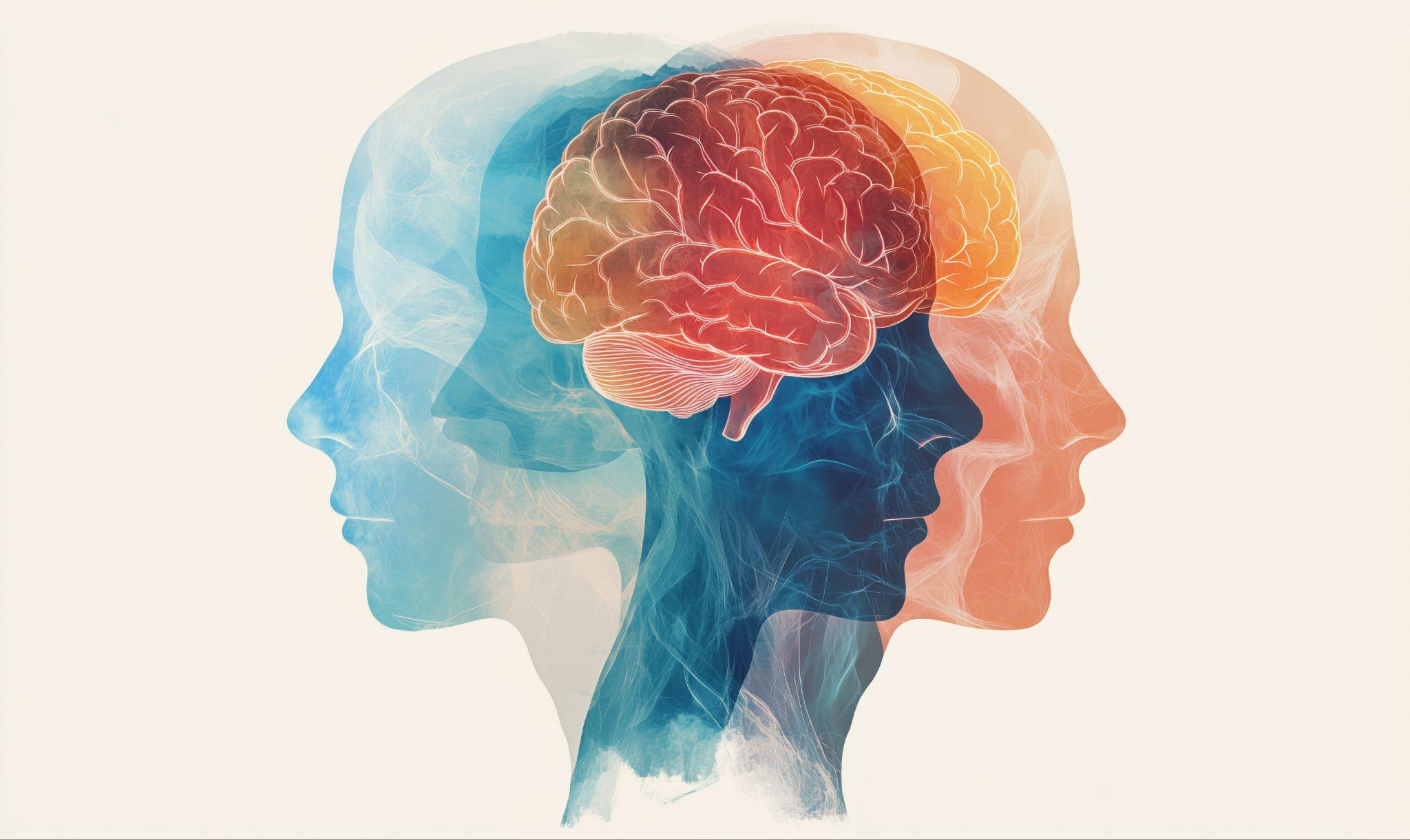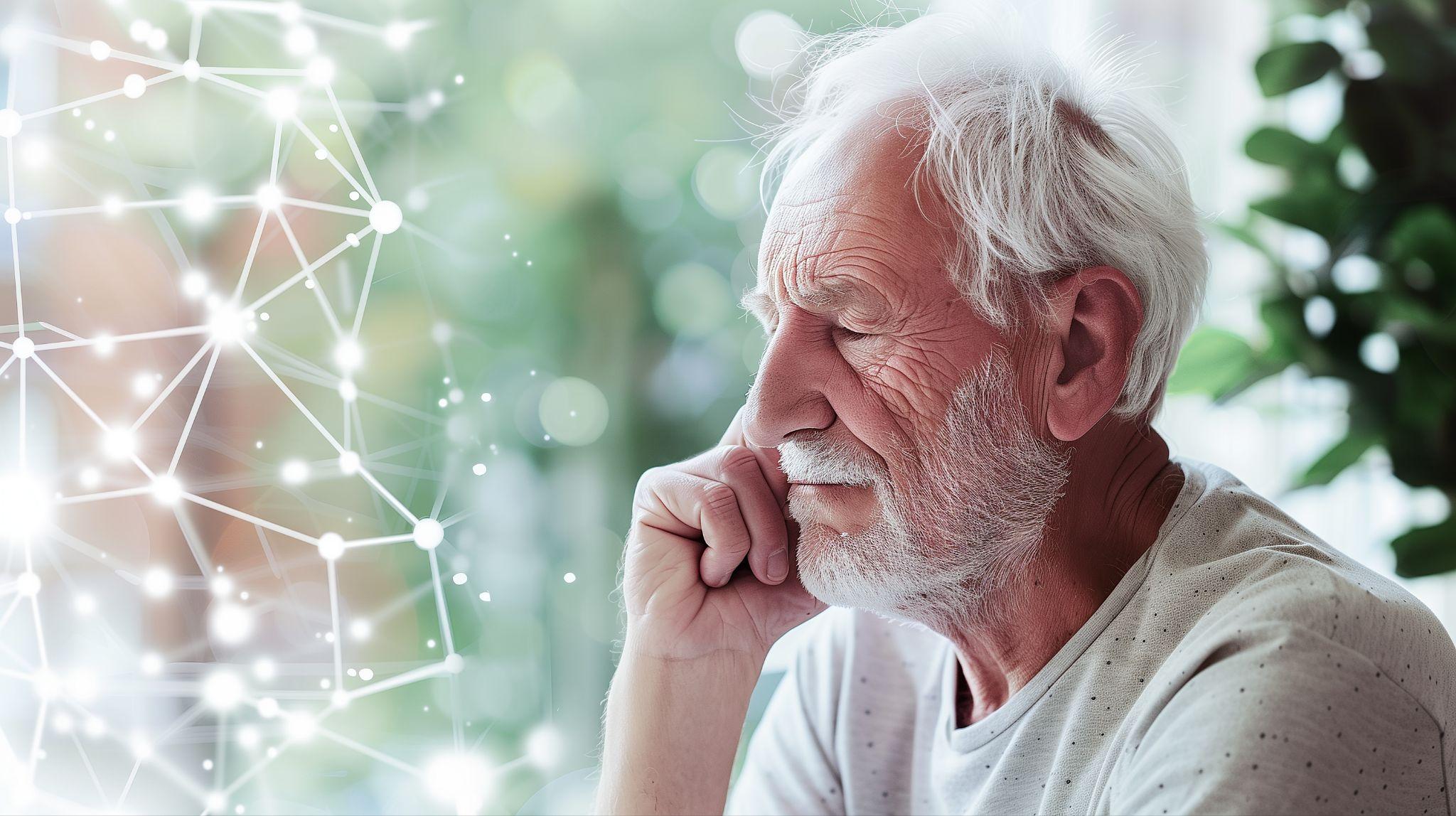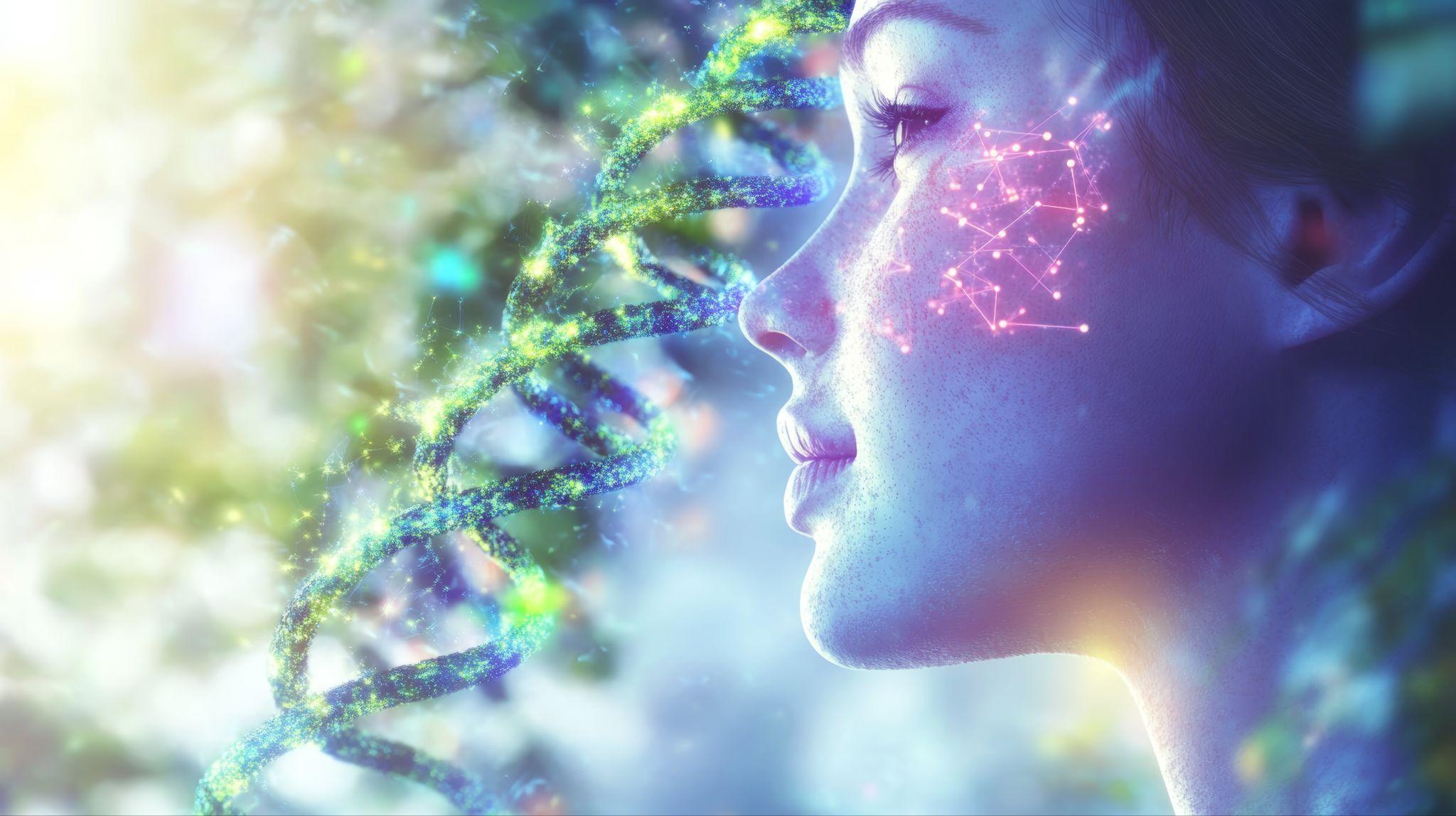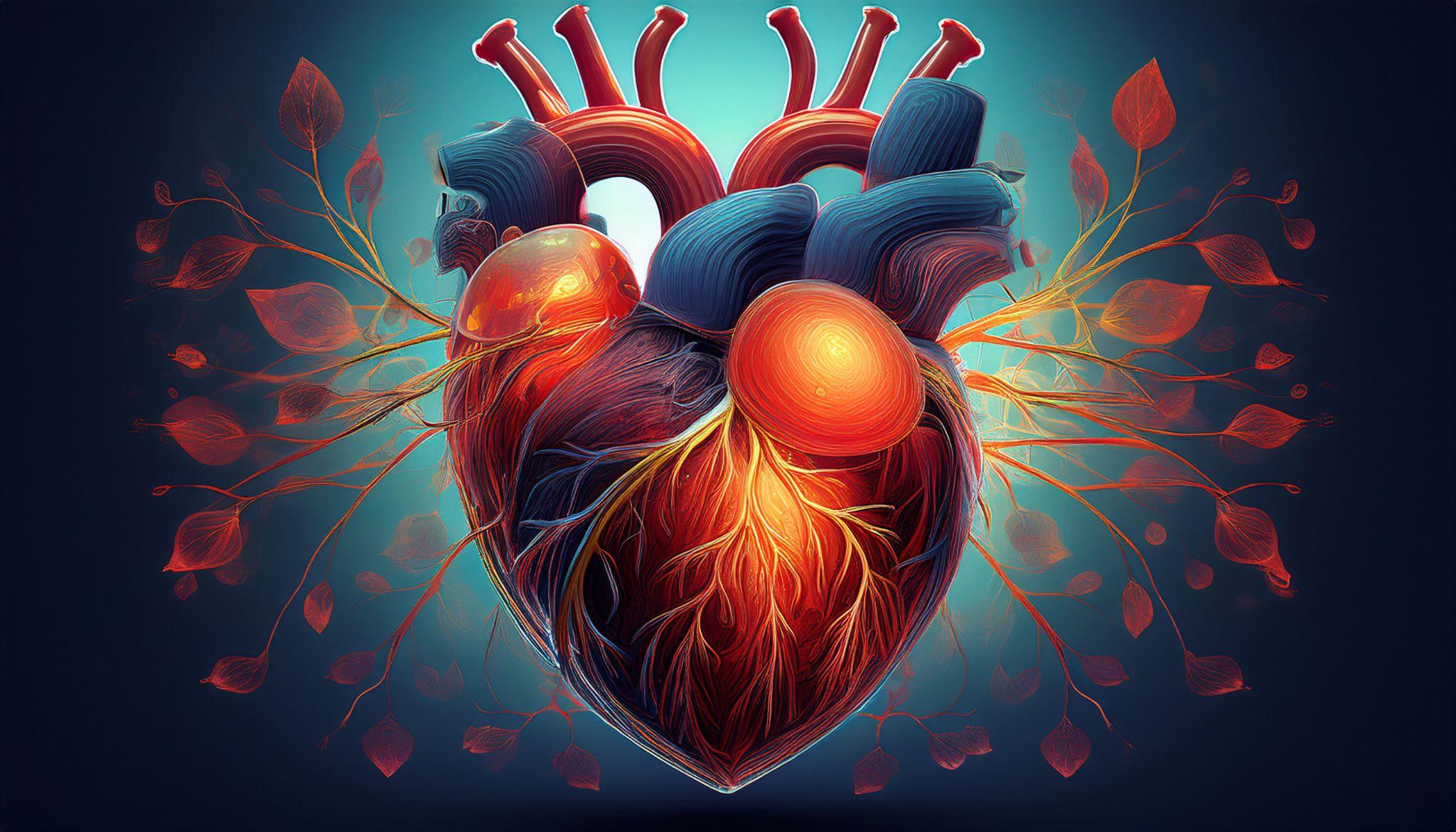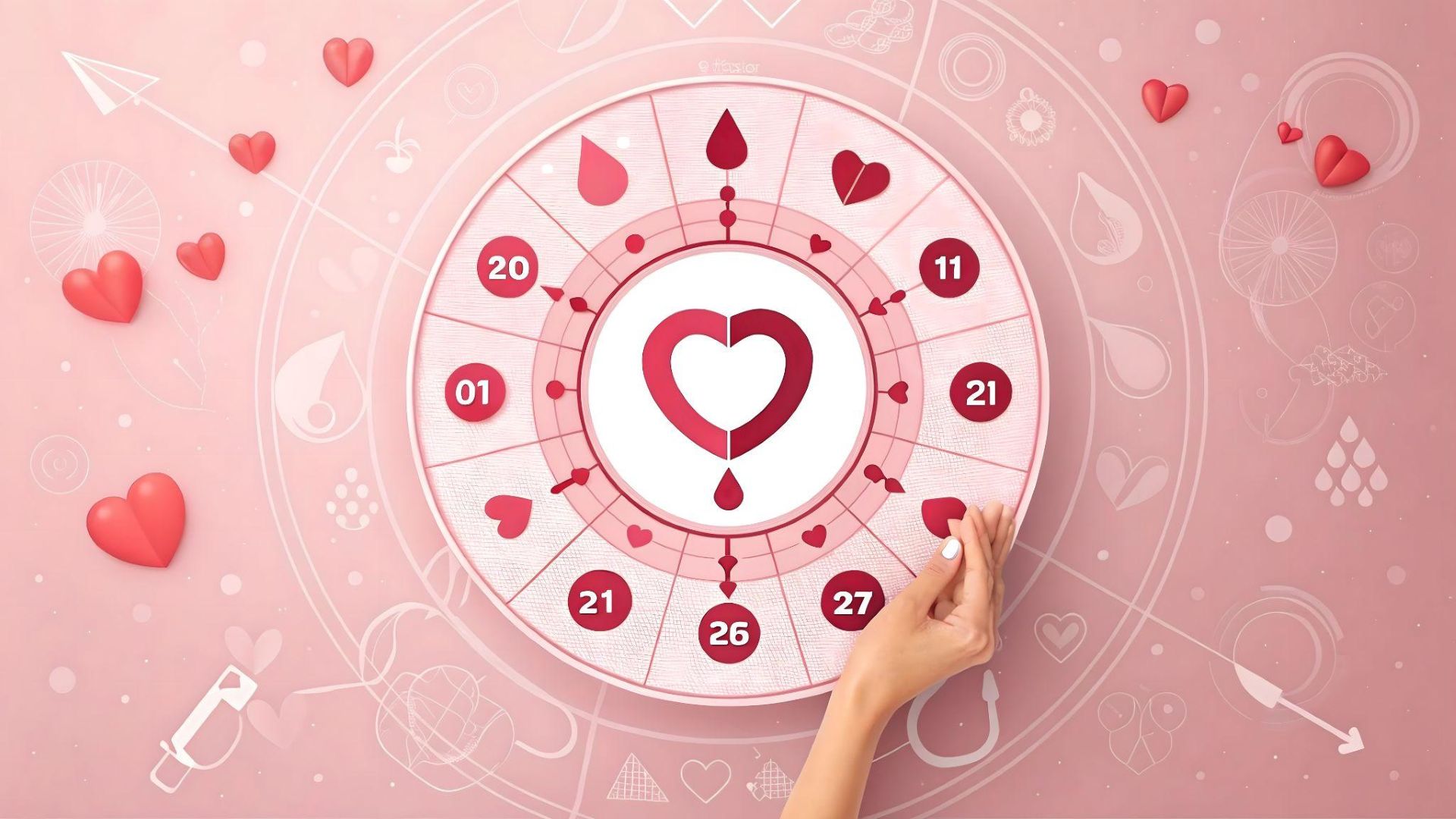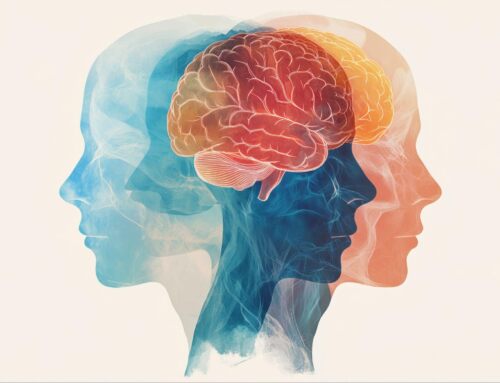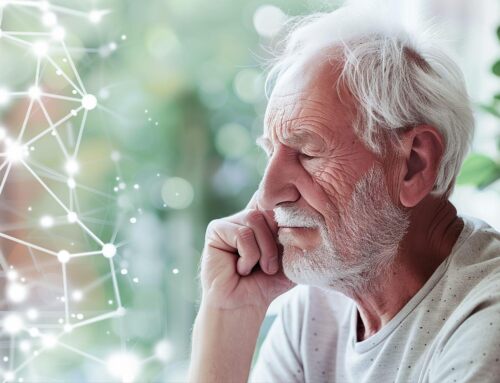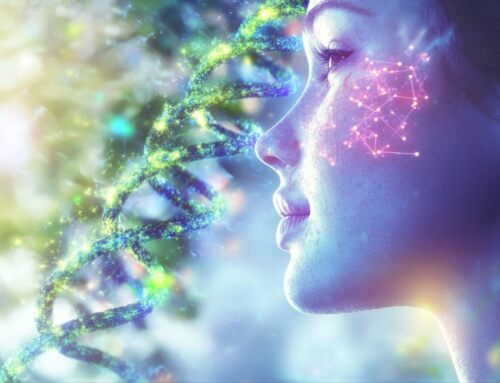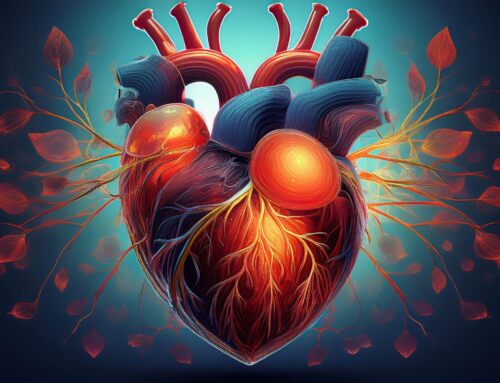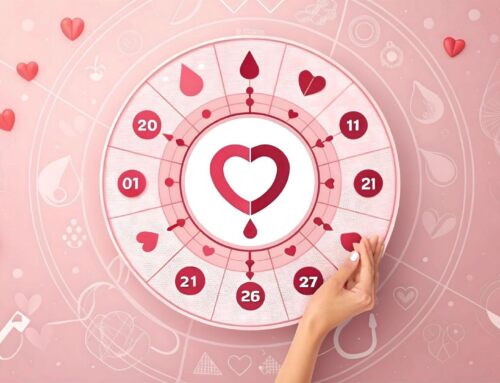Vagus Nerve Stimulation: Mechanisms and Multifaceted Clinical Applications of a Systems-Level Intervention
As a central component of the parasympathetic nervous system, the vagus nerve helps regulate homeostasis across the body and mind. When engaged to improve vagal tone, it can induce far-reaching health effects.
Vagus nerve stimulation (VNS) has evolved from a specialized therapy into a multifaceted neuromodulatory approach that engages multiple pathways to improve health. A growing body of research demonstrates its capacity to modulate autonomic nervous system function, neuroimmune signaling, systemic inflammation, and metabolism, as well as promote neuroplasticity.
How Vagus Nerve Stimulation (VNS) Works
VNS involves delivering controlled electrical impulses to the vagus nerve, either through surgically implanted devices (invasive VNS) or external stimulation at the ear or neck (noninvasive VNS, nVNS) (1). Originally developed for treatment-resistant epilepsy, VNS has since gained approval or clearance for major depression, obesity, post-stroke motor rehabilitation, and headache disorders. Exploratory research continues into its potential use in neuropsychiatric, inflammatory, cardiovascular, and systemic conditions that share overlapping mechanisms of autonomic dysregulation and impaired vagal tone.
Noninvasive VNS (nVNS) approaches allow clinicians to influence autonomic, metabolic, and immune pathways without surgery, expanding access and reducing risks. These innovations position the vagus nerve as a valuable therapeutic target in neurological, psychiatric, and systemic health (1-2).
A Conductor of Mind–Body Health
The therapeutic versatility of VNS stems from its capacity to influence shared pathological mechanisms across diverse disorders: autonomic imbalance, maladaptive stress responses, and neuroimmune dysfunction. These overlapping pathways make VNS a uniquely integrative intervention, well-aligned with integrative and systems-level approaches utilized in functional medicine.
Emerging evidence suggests potential applications across neuropsychiatric disorders (3–5), inflammatory and immune-mediated conditions (6–7), chronic pain syndromes (8), cardiovascular disease (9), and other disorders linked to autonomic dysfunction (10). The vagus nerve’s extensive innervation of thoracic and abdominal organs allows VNS to exert systemic as well as central effects, highlighting its capacity to bridge brain and body health (1–2).
Once limited to surgically implanted devices, VNS is increasingly delivered through noninvasive and closed-loop systems that tailor stimulation in real time (11–14). These innovations support individualized treatment protocols and broaden clinical applicability.
From Discovery to Modern Therapy: A Brief History of VNS
The therapeutic potential of vagus nerve stimulation was recognized in the late 1800s, when neurologist James Leonard Corning experimented with vagal stimulation to treat epilepsy (15). Though his device was abandoned, subsequent animal studies clarified neural effects: Bailey and Bremer demonstrated cortical synchronization in felines (16), Dell and Olson mapped stimulation-sensitive regions (17), and MacLean showed modulation of the cingulate cortex in primates (18).
In 1992, Zabara provided a breakthrough by showing that repetitive vagal stimulation reliably inhibited seizures in canine models (19), setting the stage for the first human clinical trials and eventual FDA approval of VNS for treatment-resistant epilepsy in the 1990s.
Mechanisms of Action: How VNS Exerts Neuromodulatory Effects
Vagus nerve stimulation (VNS) produces therapeutic effects through multiple, interconnected pathways. The vagus nerve (cranial nerve X) originates in the medulla and extends through the neck to innervate all major thoracic and abdominal organs (20). Approximately 80% of vagal fibers are afferent, relaying sensory information from the body to the brain, while the remaining efferent fibers modulate organ function. This predominance of afferent signaling is crucial: by engaging a primarily sensory nerve that simultaneously projects to visceral targets, VNS integrates peripheral signals with central regulation, enabling coordinated modulation of neural circuits, autonomic tone, immune signaling, and systemic physiology.
Forms of Noninvasive Stimulation
Transcutaneous cervical VNS (tcVNS): Targets the cervical branch of the vagus nerve through the neck.
Transcutaneous auricular VNS (taVNS): Stimulates the auricular branch via cutaneous electrodes on the ear.
Both approaches appear to reproduce key effects of implanted VNS (iVNS), though comparative trials are still limited. Current evidence suggests overlapping mechanisms—including vagal afferent activation, autonomic restoration, and central nervous system engagement—supporting their therapeutic validity (11–14).
Multifactorial Mechanisms
- Autonomic & neuroimmune modulation. VNS recalibrates autonomic balance by enhancing parasympathetic tone and reducing sympathetic dominance, while simultaneously influencing the neuroendocrine–immune axis (6, 21). Through this pathway, VNS dampens systemic inflammation and modifies immune signaling—a mechanism relevant for conditions such as depression, metabolic syndrome, chronic pain, and inflammatory disorders.
- Anticonvulsant pathways. VNS activates noradrenergic signaling via the locus coeruleus. Preclinical lesion studies show that disrupting this nucleus prevents the expression of the anticonvulsant effect, demonstrating its necessity in seizure suppression (22).
- Monoamine modulation. Animal and translational studies show that VNS enhances serotonin and norepinephrine release, increases their concentration in cerebrospinal fluid, and increases the firing rates of serotonergic and noradrenergic neurons (23, 24). These changes are thought to underlie the antidepressant and mood-stabilizing effects observed clinically.
- Neuroplasticity & repair. Evidence from animal models shows that VNS upregulates brain-derived neurotrophic factor (BDNF) and promotes dendritic spine growth in the hippocampus (25). In human studies, pairing VNS with rehabilitative therapy enhances neuroplasticity and accelerates functional recovery following stroke (26). These findings support its role in network-level repair and resilience in neurological and psychiatric conditions.
These mechanisms act synergistically, producing far-reaching therapeutic effects that influence multiple physiological systems.
Immune, Autonomic, & Systemic Effects
VNS extends its influence beyond the central nervous system, coordinating immune, autonomic, and systemic functions.
- Neuroimmune regulation. By engaging the cholinergic anti-inflammatory pathway, VNS downregulates pro-inflammatory cytokines: TNF-α and IL-6. This mechanism has been implicated in improvements seen in PTSD, inflammatory bowel disease, rheumatoid arthritis, and other immune-mediated conditions.
- Autonomic & cardiovascular effects. VNS enhances parasympathetic activity, improves heart rate variability and baroreflex sensitivity, thereby balancing blood pressure and mitigating sympathetic overdrive (27, 28). These effects are particularly relevant in disorders characterized by dysautonomia or cardiovascular risk.
- Gut–brain axis effects. VNS modulates GI motility, secretory function, and immune signaling through vagal efferents. By influencing enteric and systemic inflammation, it provides a direct mechanistic link between gut physiology and systemic disease processes.
VNS CLINICAL IMPLICATIONS
The multisystemic mechanisms of VNS drive therapeutic effects across diverse conditions.
Epilepsy
Epilepsy affects nearly 50 million people worldwide, with 20–40% of patients not responding to medications. VNS, first validated for seizure control, can reduce seizure frequency by half in 25–45% of patients, with progressive and sustained benefits over time. Seizure suppression involves multiple mechanisms: stabilization of cortical hyperexcitability via locus coeruleus–noradrenergic pathways, modulation of autonomic tone, and attenuation of neuroinflammation (22). Advances such as closed-loop iVNS and noninvasive VNS are expanding accessibility and improving quality-of-life outcomes.
Major Depression & Treatment-Resistant Depression (TRD)
Roughly 30% of individuals with major depression meet criteria for treatment-resistant depression (TRD), representing a significant unmet therapeutic need. Implanted VNS produces gradual yet durable improvements, with long-term response rates of 40–46% and remission rates up to 29% (29–30). VNS modulates neural circuits by triggering the release of neurotransmitters (acetylcholine and norepinephrine) enhancing monoamine signaling, promoting neuroplasticity, strengthening forward-directed neural signaling, restoring autonomic balance, and downregulating inflammatory pathways (27-28, 31).
Noninvasive modalities, such as taVNS and tcVNS, are also showing promising reductions in depressive symptoms, suggested to be mediated by rebalancing limbic–cortical networks and vagal afferent–driven neuroimmune modulation.
Obesity & Metabolic Disorders
Implanted cervical VNS has demonstrated modest yet meaningful metabolic benefits, including 14–33% excess weight loss (32–38). These effects appear to stem from afferent signaling to the hypothalamic centers that govern satiety and energy balance. VNS also enhances parasympathetic (and vagal) tone, as well as gut–brain communication, supporting systemic metabolism. Noninvasive approaches extend these benefits by improving postprandial glucose regulation and blood pressure, even without significant weight loss (39), suggesting a broad utility for metabolic syndrome and related disorders.
Post-Stroke Motor Rehabilitation
Pairing iVNS with rehabilitative therapy produces functional benefits in chronic stroke patients that are two to three times greater than rehabilitation alone (40). Closed-loop approaches, such as movement-activated auricular VNS (MAAVNS), synchronize stimulation with motor activity, further enhancing outcomes (41). Mechanistic drivers include facilitated neuroplasticity, enhanced cholinergic and noradrenergic signaling, improved autonomic regulation, and BDNF-mediated cortical reorganization, all of which converge to support motor recovery and resilience.
Headaches
Noninvasive VNS (both tcVNS and taVNS) reduces the frequency, severity, and duration of migraines and cluster headaches (42–48). Proposed mechanisms include modulation of trigeminovascular pathways, recalibration of central pain networks, restoration of autonomic balance, and inhibition of inflammatory signaling (49). These effects highlight VNS’s capacity to address both neural and systemic drivers of chronic pain.
Pain Disorders
VNS has demonstrated efficacy in fibromyalgia, IBS, pancreatitis, systemic lupus erythematosus (SLE), and other chronic pain syndromes (50–60). Noninvasive stimulation has been shown to reduce pain intensity, dampen temporal summation, and alleviate fatigue while also lowering proinflammatory mediators, including IL-6 and substance P (51–57). Mechanisms include modulation of central nociceptive circuits, rebalancing of autonomic function, and broad suppression of systemic inflammation.
Inflammatory Disorders
VNS exerts promising immunomodulatory effects in Crohn’s disease, rheumatoid arthritis, SLE, sepsis, and post-viral syndromes such as long COVID (61–66). Clinically, this is reflected in reductions in CRP, calprotectin, IL-6, and substance P. These effects are mediated by the cholinergic anti-inflammatory pathway, which links autonomic rebalance with systemic immune regulation.
Cardiovascular Disorders
Through its impact on autonomic tone, VNS has shown therapeutic benefit in heart failure, arrhythmias, hypertension, and angina (67–72). Mechanisms include parasympathetic enhancement, suppression of sympathetic overactivity, and improved baroreflex sensitivity. Importantly, these effects extend beyond cardiovascular health to influence mood, stress resilience, and overall autonomic function (27–28, 70).
GI Disorders
VNS exerts therapeutic effects across the gut–brain axis. Benefits have been documented in gastroparesis, IBS, obesity-related gastrointestinal dysfunction, and functional bowel disorders (53, 73-76). Clinical outcomes include enhanced gastric motility, improved bowel regularity, and reduced abdominal pain. These effects likely arise from parasympathetic modulation of gut motor activity, vagally mediated neuroimmune signaling, and systemic anti-inflammatory effects —mechanisms that also intersect with mood, metabolism, and pain pathways.
A Unifying Mechanistic Theme
Vagus nerve stimulation (VNS) supports the body’s innate ability to maintain balance by enhancing autonomic regulation, modulating neuroimmune signaling, and reducing systemic inflammation. Its effects ripple across multiple systems, offering benefits for both physical and mental health.
Unlocking the Power of VNS
Originally developed for medication-resistant epilepsy, VNS is now recognized as a versatile tool for systemic neuromodulation. By influencing neural circuits, autonomic function, and immune pathways, it shows promise across neurological, psychiatric, metabolic, inflammatory, and GI disorders—making it a valuable modality in integrative and functional medicine.
Join us on October 21, from 5-7 pm PST, for Unlocking the Power of Vagus Nerve Stimulation: Real Cases, Real Results, a webinar exploring practical strategies for integrating VNS into clinical practice with leading experts Jeffrey Bland, PhD; Navaz Habib, DC; and Peter Staats, MD, MBA, ABIPP, FIPP.
References:
- Austelle CW, Cox SS, Wills KE, Badran BW. Vagus nerve stimulation (VNS): recent advances and future directions. Clin Auton Res. 2024 Dec;34(6):529-547. doi: 10.1007/s10286-024-01065-w. Epub 2024 Oct 4. PMID: 39363044; PMCID: PMC11543756.
- Austelle CW et al (2022) A comprehensive review of vagus nerve stimulation for depression. Neuromodulation Technol Neural Interface 25:309–315 [DOI] [PMC free article] [PubMed] [Google Scholar]
- Ben-Menachem E (2001) Vagus nerve stimulation, side effects, and long-term safety. J Clin Neurophysiol 18(5):415–418 [DOI] [PubMed] [Google Scholar
- .Dawson J et al (2016) Safety, feasibility, and efficacy of vagus nerve stimulation paired with upper-limb rehabilitation after ischemic stroke. Stroke 47(1):143–150 [DOI] [PMC free article] [PubMed] [Google Scholar]
- George MS et al (2005) A one-year comparison of vagus nerve stimulation with treatment as usual for treatment-resistant depression. Biol Psychiatry 58(5):364–373 [DOI] [PubMed] [Google Scholar.
- Koopman FA et al (2016) Vagus nerve stimulation inhibits cytokine production and attenuates disease severity in rheumatoid arthritis. Proc Natl Acad Sci U S A 113(29):8284–8289 [DOI] [PMC free article] [PubMed] [Google Scholar.
- Kressel AM et al (2020) Identification of a brainstem locus that inhibits tumor necrosis factor. Proc Natl Acad Sci U S A 117(47):29803–29810 [DOI] [PMC free article] [PubMed] [Google Scholar.
- Shao P et al (2023) Role of vagus nerve stimulation in the treatment of chronic pain. NeuroImmunoModulation 30(1):167–183 [DOI] [PMC free article] [PubMed] [Google Scholar]
- Wu Z et al (2023) Chronic vagus nerve stimulation in patients with heart failure: challenge or failed translation? Front Cardiovasc Med 10:1052471 [DOI] [PMC free article] [PubMed] [Google Scholar]
- Zhang Y et al (2009) Chronic vagus nerve stimulation improves autonomic control and attenuates systemic inflammation and heart failure progression in a canine high-rate pacing model. Circ Heart Fail 2(6):692–699 [DOI] [PubMed] [Google Scholar]
- Badran BW et al (2018) Neurophysiologic effects of transcutaneous auricular vagus nerve stimulation (taVNS) via electrical stimulation of the tragus: a concurrent taVNS/fMRI study and review. Brain Stimul 11(3):492–500 [DOI] [PMC free article] [PubMed] [Google Scholar]
- Badran BW et al (2018) Short trains of transcutaneous auricular vagus nerve stimulation (taVNS) have parameter-specific effects on heart rate. Brain Stimul 11(4):699–708 [DOI] [PMC free article] [PubMed] [Google Scholar]
- Datta P et al (2020) Vagus nerve stimulation with tachycardia detection provides additional seizure reduction compared to traditional vagus nerve stimulation. Epilepsy Behav 111:107280[DOI] [PubMed] [Google Scholar]
- Badran BW et al (2023) Motor activated auricular vagus nerve stimulation as a potential neuromodulation approach for post-stroke motor rehabilitation: a pilot study. Neurorehabil Neural Repair 37(6):374–383 [DOI] [PMC free article] [PubMed] [Google Scholar]
- Lanska DJ (2002) J.L. Corning and vagal nerve stimulation for seizures in the 1880s. Neurology 58(3):452–459 [DOI] [PubMed] [Google Scholar]
- Bailey P, Bremer F (1938) A sensory cortical representation of the vagus nerve (with a note on the effects of low blood pressure on the cortical electrograms). J Neurophysiol 1:405–412 [Google Scholar]
- Dell P, Olson R (1951) Thalamic, cortical and cerebellar projections of vagal visceral afferences. C R Seances Soc Biol Fil 145(13–14):1084–1088[PubMed] [Google Scholar]
- Reiner A. The Triune Brain in Evolution. Role in Paleocerebral Functions. Paul D. MacLean. Plenum, New York, 1990. xxiv, 672 pp., illus. $75. 1990 Oct 12;250(4978):303-5. doi: 10.1126/science.250.4978.303-a. PMID: 17797318.
- Zabara J (1992) Inhibition of experimental seizures in canines by repetitive vagal stimulation. Epilepsia 33(6):1005–1012 [DOI] [PubMed] [Google Scholar]
- .George MS et al (2000) Vagus nerve stimulation: a new form of therapeutic brain stimulation. CNS Spectr 5(11):43–52 [DOI] [PubMed] [Google Scholar]
- Cui L et al (2024) Major depressive disorder: hypothesis, mechanism, prevention and treatment. Signal Transduct Target Ther 9(1):30[DOI] [PMC free article] [PubMed] [Google Scholar]
- Krahl SE et al (1998) Locus coeruleus lesions suppress the seizure-attenuating effects of vagus nerve stimulation. Epilepsia 39(7):709–714 [DOI] [PubMed] [Google Scholar]
- Ben-Menachem E et al (1995) Effects of vagus nerve stimulation on amino acids and other metabolites in the CSF of patients with partial seizures. Epilepsy Res 20(3):221–227 [DOI] [PubMed] [Google Scholar]
- Follesa P et al (2007) Vagus nerve stimulation increases norepinephrine concentration and the gene expression of BDNF and bFGF in the rat brain. Brain Res 1179:28–34 [DOI] [PubMed] [Google Scholar]
- Furmaga H, Carreno FR, Frazer A (2012) Vagal nerve stimulation rapidly activates brain-derived neurotrophic factor receptor TrkB in rat brain. PLoS ONE 7(5):e34844 [DOI] [PMC free article] [PubMed] [Google Scholar]
- Khodaparast N et al (2013) Vagus nerve stimulation during rehabilitative training improves forelimb strength following ischemic stroke. Neurobiol Dis 60:80–88 [DOI] [PubMed] [Google Scholar]
- Clancy JA et al (2014) Non-invasive vagus nerve stimulation in healthy humans reduces sympathetic nerve activity. Brain Stimul 7(6):871–877 [DOI] [PubMed] [Google Scholar]
- Antonino D et al (2017) Non-invasive vagus nerve stimulation acutely improves spontaneous cardiac baroreflex sensitivity in healthy young men: a randomized placebo-controlled trial. Brain Stimul 10(5):875–881 [DOI] [PubMed] [Google Scholar]
- Rush AJ et al (2000) Vagus nerve stimulation (VNS) for treatment-resistant depressions: a multicenter study. Biol Psychiatry 47(4):276–286[DOI] [PubMed] [Google Scholar]
- Nahas Z et al (2005) Two-year outcome of vagus nerve stimulation (VNS) for treatment of major depressive episodes. J Clin Psychiatry 66(9):1097–1104 [DOI] [PubMed] [Google Scholar]
- Jin Z et al (2023) Exploring the potential of vagus nerve stimulation in treating brain diseases: a review of immunologic benefits and neuroprotective efficacy. Eur J Med Res 28(1):444 [DOI] [PMC free article] [PubMed] [Google Scholar]
- Ikramuddin S et al (2014) Effect of reversible intermittent intra-abdominal vagal nerve blockade on morbid obesity: the ReCharge randomized clinical trial. JAMA 312(9):915–922[DOI] [PubMed] [Google Scholar]
- Apovian CM et al (2017) Two-year outcomes of vagal nerve blocking (vBloc) for the treatment of obesity in the ReCharge trial. Obes Surg 27(1):169–176 [DOI] [PMC free article] [PubMed] [Google Scholar]
- Camilleri M et al (2008) Intra-abdominal vagal blocking (VBLOC therapy): clinical results with a new implantable medical device. Surgery 143(6):723–731 [DOI] [PubMed] [Google Scholar]
- Shikora S et al (2013) Vagal blocking improves glycemic control and elevated blood pressure in obese subjects with type 2 diabetes mellitus. J Obes 2013:245683 [DOI] [PMC free article] [PubMed] [Google Scholar]
- Shikora SA et al (2016) Erratum to: intermittent vagal nerve block for improvements in obesity, cardiovascular risk factors, and glycemic control in patients with type 2 diabetes mellitus: 2-year results of the VBLOC DM2 study. Obes Surg 26(5):1029 [DOI] [PubMed] [Google Scholar]
- Sarr MG et al (2012) The EMPOWER study: randomized, prospective, double-blind, multicenter trial of vagal blockade to induce weight loss in morbid obesity. Obes Surg 22(11):1771–1782 [DOI] [PubMed] [Google Scholar]
- Morton JM et al (2016) Effect of vagal nerve blockade on moderate obesity with an obesity-related comorbid condition: the ReCharge study. Obes Surg 26(5):983–989 [DOI] [PMC free article] [PubMed] [Google Scholar]
- Huang F et al (2014) Effect of transcutaneous auricular vagus nerve stimulation on impaired glucose tolerance: a pilot randomized study. BMC Complement Altern Med 14:203 [DOI] [PMC free article] [PubMed] [Google Scholar]
- Dawson J et al (2021) Vagus nerve stimulation paired with rehabilitation for upper limb motor function after ischaemic stroke (VNS-REHAB): a randomised, blinded, pivotal, device trial. Lancet 397(10284):1545–1553 [DOI] [PMC free article] [PubMed] [Google Scholar]
- Peng X et al (2023) Left or right ear? a neuroimaging study using combined taVNS/fMRI to understand the interaction between ear stimulation target and lesion location in chronic stroke. Brain Stimul 16(4):1144–1153 [DOI] [PubMed] [Google Scholar]
- Yuan H, Silberstein SD (2017) Vagus nerve stimulation and headache. Headache 57(Suppl 1):29–33 [DOI] [PubMed] [Google Scholar]
- Goadsby PJ et al (2014) Effect of noninvasive vagus nerve stimulation on acute migraine: an open-label pilot study. Cephalalgia 34(12):986–993 [DOI] [PubMed] [Google Scholar]
- Tassorelli C et al (2018) Noninvasive vagus nerve stimulation as acute therapy for migraine: the randomized PRESTO study. Neurology 91(4):e364–e373 [DOI] [PMC free article] [PubMed] [Google Scholar]
- Silberstein SD et al (2016) Non-invasive vagus nerve stimulation for the ACute Treatment of Cluster Headache: findings from the randomized, double-blind, sham-controlled ACT1 study. Headache 56(8):1317–1332 [DOI] [PMC free article] [PubMed] [Google Scholar]
- Goadsby PJ et al (2018) Non-invasive vagus nerve stimulation for the acute treatment of episodic and chronic cluster headache: a randomized, double-blind, sham-controlled ACT2 study. Cephalalgia 38(5):959–969 [DOI] [PMC free article] [PubMed] [Google Scholar]
- Diener HC et al (2019) Non-invasive vagus nerve stimulation (nVNS) for the preventive treatment of episodic migraine: the multicentre, double-blind, randomised, sham-controlled PREMIUM trial. Cephalalgia 39(12):1475–1487[DOI] [PMC free article] [PubMed] [Google Scholar]
- Straube A, Eren O (2021) tVNS in the management of headache and pain. Auton Neurosci 236:102875 [DOI] [PubMed] [Google Scholar]
- Zhang Y et al (2019) Transcutaneous auricular vagus nerve stimulation at 1 Hz modulates locus coeruleus activity and resting state functional connectivity in patients with migraine: an fMRI study. Neuroimage Clin 24:101971 [DOI] [PMC free article] [PubMed] [Google Scholar]
- Zamotrinsky AV, Kondratiev B, de Jong JW (2001) Vagal neurostimulation in patients with coronary artery disease. Auton Neurosci 88(1):109–116 [DOI] [PubMed] [Google Scholar]
- Aranow C et al (2021) Transcutaneous auricular vagus nerve stimulation reduces pain and fatigue in patients with systemic lupus erythematosus: a randomised, double-blind, sham-controlled pilot trial. Ann Rheum Dis 80(2):203–208 [DOI] [PubMed] [Google Scholar]
- Bellocchi C et al (2023) Transcutaneous auricular branch vagal nerve stimulation as a non-invasive add-on therapeutic approach for pain in systemic sclerosis. RMD Open. 10.1136/rmdopen-2023-003265 [DOI] [PMC free article] [PubMed] [Google Scholar]
- Shi X et al (2021) Ameliorating effects and mechanisms of transcutaneous auricular vagal nerve stimulation on abdominal pain and constipation. JCI Insight. 10.1172/jci.insight.150052 [DOI] [PMC free article] [PubMed] [Google Scholar]
- Kovacic K et al (2017) Neurostimulation for abdominal pain-related functional gastrointestinal disorders in adolescents: a randomised, double-blind, sham-controlled trial. Lancet Gastroenterol Hepatol 2(10):727–737[DOI] [PubMed] [Google Scholar]
- Muthulingam JA et al (2021) Cervical transcutaneous vagal neuromodulation in chronic pancreatitis patients with chronic pain: a randomised sham controlled clinical trial. PLoS ONE 16(2):e0247653 [DOI] [PMC free article] [PubMed] [Google Scholar]
- Frøkjaer JB et al (2016) Modulation of vagal tone enhances gastroduodenal motility and reduces somatic pain sensitivity. Neurogastroenterol Motil 28(4):592–598 [DOI] [PubMed] [Google Scholar]
- Napadow V et al (2012) Evoked pain analgesia in chronic pelvic pain patients using respiratory-gated auricular vagal afferent nerve stimulation. Pain Med 13(6):777–789 [DOI] [PMC free article] [PubMed] [Google Scholar]
- .Busch V et al (2013) The effect of transcutaneous vagus nerve stimulation on pain perception–an experimental study. Brain Stimul 6(2):202–209 [DOI] [PubMed] [Google Scholar]
- .Alt LK et al (2020) A randomized sham-controlled cross-over study on the short-term effect of non-invasive cervical vagus nerve stimulation on spinal and supraspinal nociception in healthy subjects. Headache 60(8):1616–1631[DOI] [PubMed] [Google Scholar]
- Farmer AD et al (2020) Transcutaneous vagus nerve stimulation prevents the development of, and reverses, established oesophageal pain hypersensitivity. Aliment Pharmacol Ther 52(6):988–996 [DOI] [PubMed] [Google Scholar
- Jin Z et al (2023) Exploring the potential of vagus nerve stimulation in treating brain diseases: a review of immunologic benefits and neuroprotective efficacy. Eur J Med Res 28(1):444 [DOI] [PMC free article] [PubMed] [Google Scholar]
- Sinniger V et al (2020) A 12-month pilot study outcomes of vagus nerve stimulation in Crohn’s disease. Neurogastroenterol Motil 32(10):e13911 [DOI] [PubMed] [Google Scholar]
- D’Haens G et al (2019) Vagus nerve stimulation reduces disease activity and modulates serum and autonomic biomarkers in biologicrefractory crohn’s disease. Gastroenterology 156(6):S75–S75 [Google Scholar]
- Wu Z et al (2023) Transcutaneous auricular vagus nerve stimulation reduces cytokine production in sepsis: an open double-blind, sham-controlled, pilot study. Brain Stimul 16(2):507–514 [DOI] [PubMed] [Google Scholar]
- Bazoukis G, Stavrakis S, Armoundas AA (2023) Vagus nerve stimulation and inflammation in cardiovascular disease: a state-of-the-art review. J Am Heart Assoc 12(19):e030539 [DOI] [PMC free article] [PubMed] [Google Scholar]
- Badran BW et al (2022) A pilot randomized controlled trial of supervised, at-home, self-administered transcutaneous auricular vagus nerve stimulation (taVNS) to manage long COVID symptoms. Bioelectron Med 8(1):13 [DOI] [PMC free article] [PubMed] [Google Scholar]
- Gold MR et al (2016) Vagus nerve stimulation for the treatment of heart failure: the INOVATE-HF trial. J Am Coll Cardiol 68(2):149–158 [DOI] [PubMed] [Google Scholar]
- De Ferrari GM et al (2011) Chronic vagus nerve stimulation: a new and promising therapeutic approach for chronic heart failure. Eur Heart J 32(7):847–855 [DOI] [PubMed] [Google Scholar]
- Zannad F et al (2015) Chronic vagal stimulation for the treatment of low ejection fraction heart failure: results of the NEural Cardiac TherApy foR Heart Failure (NECTAR-HF) randomized controlled trial. Eur Heart J 36(7):425–433 [DOI] [PMC free article] [PubMed] [Google Scholar]
- Premchand RK et al (2014) Autonomic regulation therapy via left or right cervical vagus nerve stimulation in patients with chronic heart failure: results of the ANTHEM-HF trial. J Card Fail 20(11):808–816 [DOI] [PubMed] [Google Scholar]
- Zamotrinsky AV, Kondratiev B, de Jong JW (2001) Vagal neurostimulation in patients with coronary artery disease. Auton Neurosci 88(1–2):109–116 [DOI] [PubMed] [Google Scholar]
- L et al (2017) Low-level tragus stimulation for the treatment of ischemia and reperfusion injury in patients with ST-segment elevation myocardial infarction: a proof-of-concept study. JACC Cardiovasc Interv 10(15):1511–1520 [DOI] [PubMed] [Google Scholar]
- Kaut O et al (2019) Transcutaneous vagal nerve stimulation improves gastroenteric complaints in Parkinson’s disease patients. NeuroRehabilitation 45(4):449–451 [DOI] [PubMed] [Google Scholar]
- Zhang B et al (2021) Integrative effects and vagal mechanisms of transcutaneous electrical acustimulation on gastroesophageal motility in patients with gastroesophageal reflux disease. Am J Gastroenterol 116(7):1495–1505 [DOI] [PubMed] [Google Scholar]
- Paulon E et al (2017) Proof of concept: short-term non-invasive cervical vagus nerve stimulation in patients with drug-refractory gastroparesis. Frontline Gastroenterol 8(4):325–330 [DOI] [PMC free article] [PubMed] [Google Scholar]
- Gottfried-Blackmore A et al (2020) Open-label pilot study: non-invasive vagal nerve stimulation improves symptoms and gastric emptying in patients with idiopathic gastroparesis. Neurogastroenterol Motil 32(4):e13769 [DOI] [PMC free article] [PubMed] [Google Scholar]
